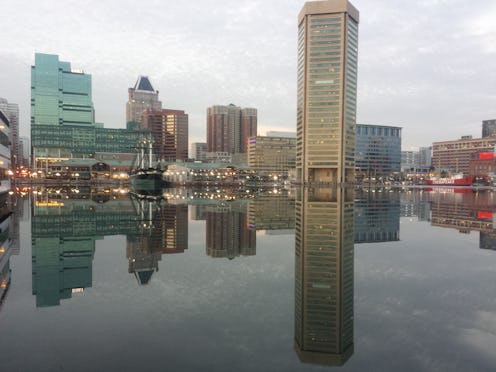News
Baltimore's Civil Rights History Keeps Growing
Ever since the death of 25-year-old Freddie Gray on April 19 from unexplained injuries he sustained while in the custody of the Baltimore Police Department, the city of Baltimore has become the civil rights flashpoint of the moment, just like Ferguson did after the death of Michael Brown. And, as it turns out, it's a prime location for just such a protest and a cause — Baltimore has a long history on civil rights, and with the city and its police now under heavy scrutiny, it's worth taking a look.
The reality — the dirty little secret, if you will — is that virtually anywhere you go in America, you can find cities and towns that have histories marbled with racial strife, however far back it might be. It's not that Baltimore is necessarily unique in this respect (although it has a very rich, specific history), but the details of the city's history might help inform how we should view things today.
After all, the Department of Justice is now investigating Gray's death, and the importance of that from a civil rights perspective is obvious. The last time they got involved in something like this, it concluded with a damning report on the Ferguson Police Department, revealing widespread discrimination and abuses of power. Here are some prominent moments, themes, and struggles in Baltimore's civil rights history.
The Read's Drug Store Sit-In (1955)
The 1955 sit-in at Read's Drug Store was noteworthy for a number of reasons. First, it's widely considered to be one of the first such actions in the country, a precursor to the famed Woolworth's lunch counter sit-ins of the 1960s. And second, it was an almost immediate success.
As detailed by Baltimore magazine's Ron Cassie, Morgan State College student Helena Hicks entered Read's Drug Store in 1955 with some friends in tow, hoping to get a hot drink and a rest from lugging her books around. And when they were told (in Hicks' words) that "n-----s weren't allowed," the young women refused to leave. It wasn't a huge amount of time — Hicks estimates about 20 minutes — but it appeared to have some effect. Within days, Read's moved to desegregate all 39 of its stores, and the potential success of the sit-in was clear to see.
Desegregation Of Baltimore City Schools (1954 — Present)
Baltimore's history around school segregation is particular troubling, and it starts at precisely the same time as such history did for many cities — after the Supreme Court's Brown v. Board of Education ruling in 1954, which held that state laws segregating schools were unconstitutional. Like it was in a lot of places, the transition was rocky-going for the city, with protesters furiously decrying the change, and at least a few physical melees breaking out, as detailed by the Maryland Historical Society Library.
But unfortunately, just over 60 years later, the fundamental problem of school segregation hasn't changed nearly enough. While segregation is no longer codified as such, school districting and heavy self-segregation from one community to the next have left black and brown children in Baltimore pretty thoroughly carved out with each other — more than half of the city's black students were reportedly attending school under functional segregation in 2010, according to The Washington Post.
A History Of Police Brutality (2011 — 2014)
By no means should you assume all the incidents of police brutality in Baltimore took place in these four years, to be clear. But it's the time frame that the Baltimore Sun's Mark Puente examined for his expertly detailed story "Undue Force", an epic piece detailing the BPD's legal history on police violence.
Puente's story is, to put it lightly, absolutely essential reading, and it's far too in-depth to fully reflect here. If you have the time, I'd strongly encourage you read it. Nonetheless, the takeaway figures are deeply startling on their own — nearly $6 million paid in settlements and judgments over police abuse between 2011 through 2014, to more than 100 people.
The Death Of Freddie Gray (2015)
The primary reason for all this current tumult, though when you're talking about activities like rioting, it's worth considering the slow burn of history, too. To recap — on April 12, Gray was arrested after taking off running upon sight of the police. An onlooker captured it on video, as Gray was being dragged into the back of a Baltimore Police Department van.
The footage of Gray's arrest is the last publicly available record of him conscious. By the time he was taken out of the van about 45 minutes later, he was in a dire state, and by the time he was taken to a trauma center, he slipped into a coma. He died on April 19, one week later, with a severed spine and a crushed voice box, according to The Baltimore Sun. The BPD have since suspended six officers from duty, but no official, fully comprehensive explanation has yet been given as to just what happened during that van ride.
Protesters and activists are sure to keep pressing the issue until more information comes out, however. The Black Lives Matter movement has proven to be quite durable over the last many months, after all, and the available facts of Gray's case have spurred fervent outcry all over the nation.
Images: Getty Images (2)
